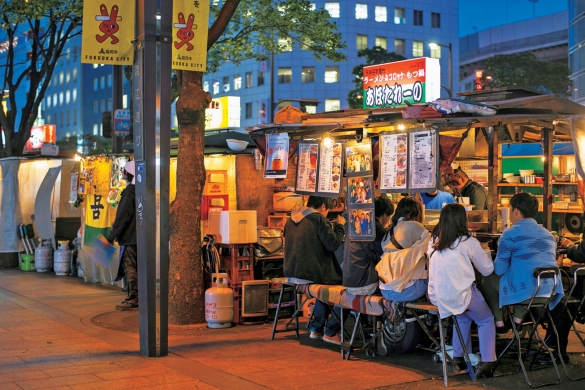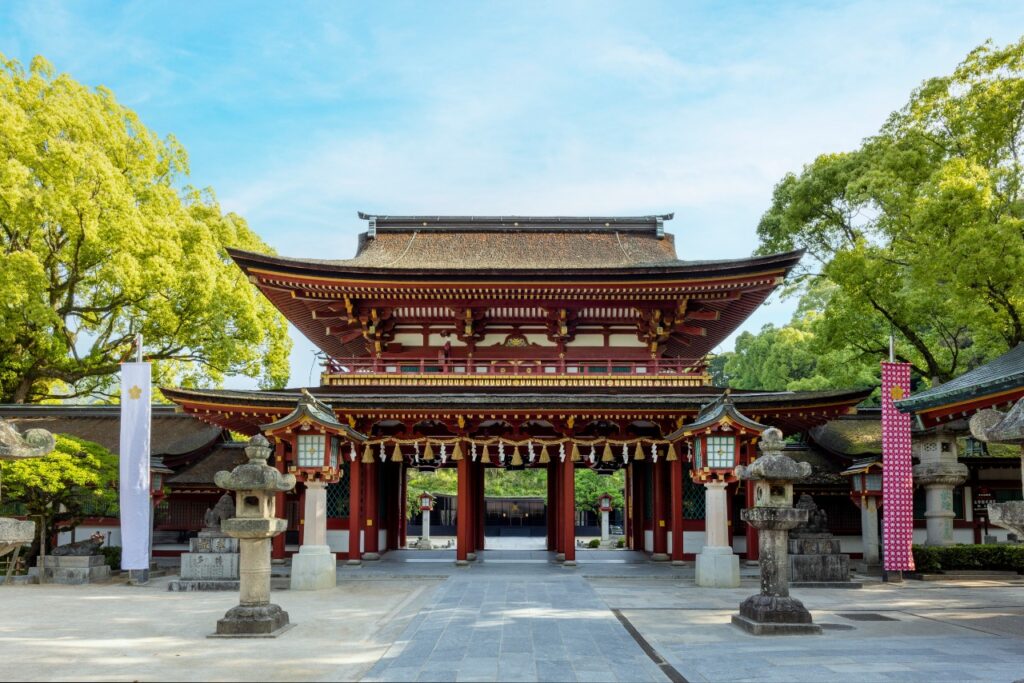
Dazaifu Tenmangu Shrine is the head shrine of the approximately 10,000 Tenmangu shrines across Japan. This is a comprehensive guide to the charms of Dazaifu Tenmangu Shrine, which enshrines Sugawara no Michizane, who was active as a scholar and politician during the Heian period and is still known as the god of learning, culture, and the arts to this day!
The head shrine of Tenmangu! Basic information about Dazaifu Tenmangu
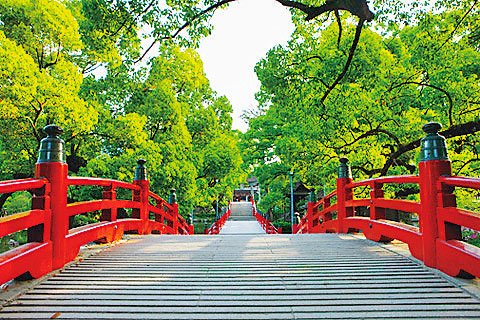
Dazaifu Tenmangu Shrine, the head shrine of the approximately 10,000 Tenmangu shrines across the country, enshrines Sugawara no Michizane, who died here. Sugawara no Michizane was known as a leading scholar and outstanding politician during the Heian period, highly valued by Emperor Uda, and served as Minister of the Right during the reign of Emperor Daigo. He is known as the god of learning, but is also worshiped as a god of sincerity, protection from misfortune, and culture and the arts.
Dazaifu Tenmangu Shrine has a long history, with a shrine built on top of the tomb, dating back more than 1100 years! The main hall is designated as an Important Cultural Property of Japan.
Five highlights of Dazaifu Tenmangu Shrine
1. Taiko Bridge

The Taiko Bridge is a sacred bridge that spans the Shinji Pond, which is shaped like the character for "heart." It is said that crossing it will purify your mind and body, and the three bridges, Taiko Bridge, Flat Bridge, and Taiko Bridge, represent the past, present, and future. The two Taiko Bridges have steep inclines, allowing you to experience the ups and downs of life.
2.tower gate
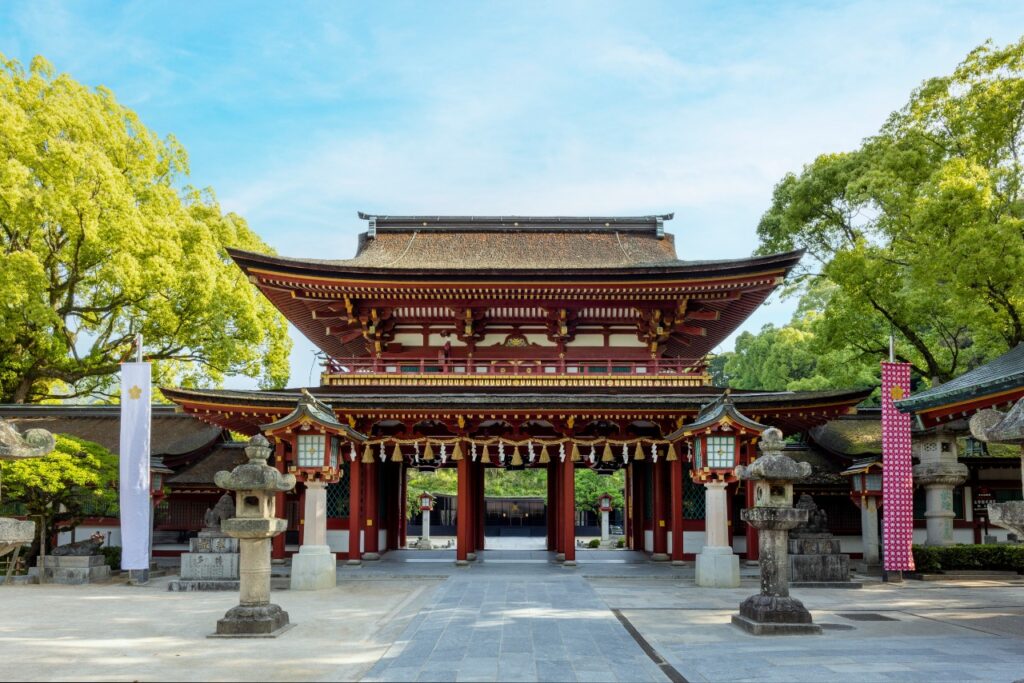
A vibrant vermilion-painted tower gate. When you head towards the main hall, you will see a double-layered roof made of turret bark, but when you return, you will see a single-layered roof, which is a distinctive feature of the gate's shape. It was rebuilt in 1914 and is a popular photo spot.
3. Well of Josui
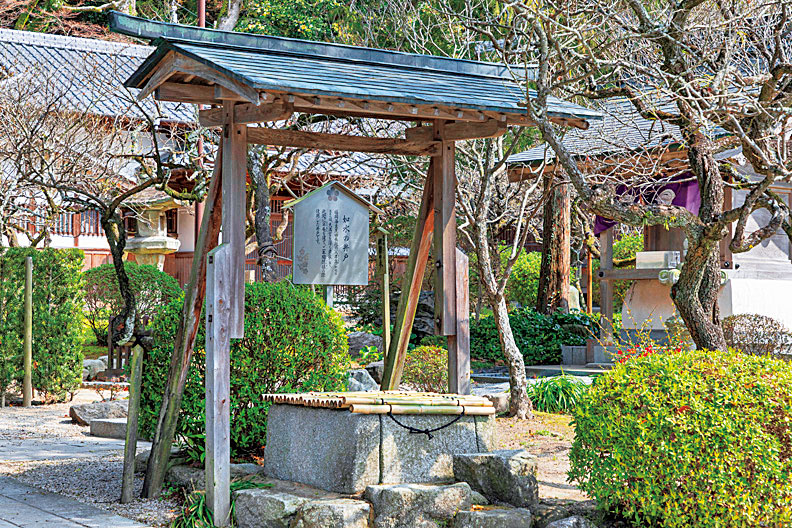
The well of Josui is said to have been used for tea ceremonies by Kanbei Kuroda, who lived temporarily at Dazaifu Tenmangu Shrine until his residence in Fukuoka Castle was completed. It is located along the road leading from the approach to the Kyushu National Museum.
4. sacred cow
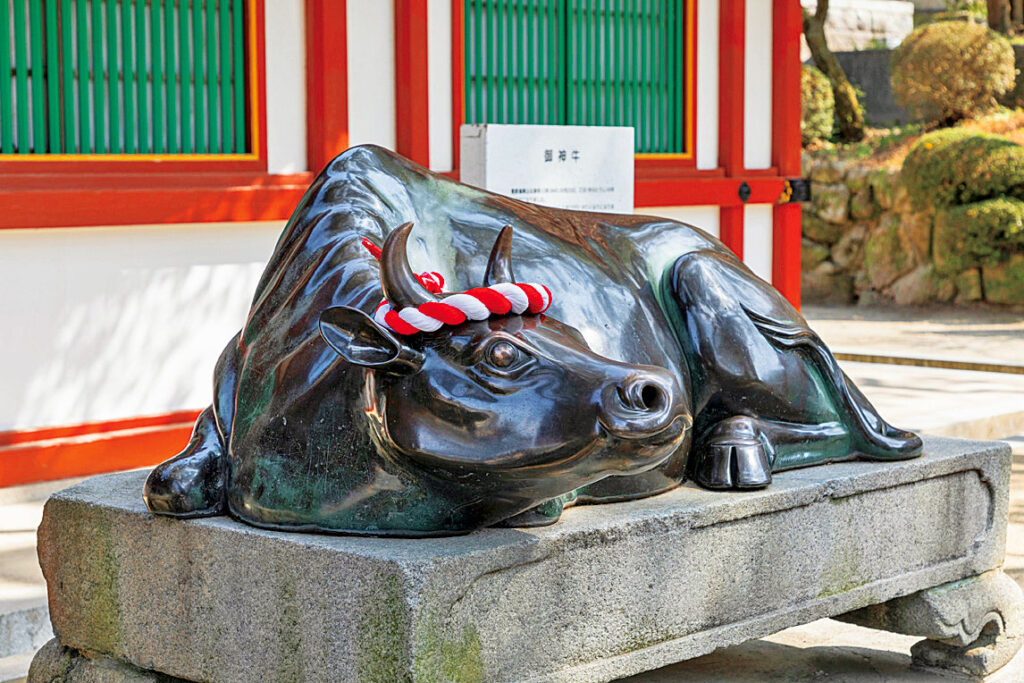
As Michizane was born in the Year of the Ox, many bronze and stone statues of oxen have been dedicated within the shrine grounds. Only the head of the sacred ox shines brightly, as it is believed that stroking its head will grant wisdom.
5. Big Camphor

Among the many giant camphor trees in the temple grounds, the one that stands out the most is the large camphor tree that stands to the north of the shrine office. It boasts a height of 39m and a trunk circumference of 20m. This imposing tree, designated as a natural monument, is truly a spectacular sight.
Flower calendar that you want to visit every season, enjoy in the precincts
■ Camphor leaves
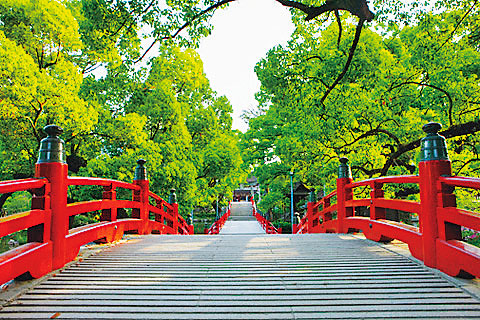
From mid-April to late May, the camphor trees in the temple grounds all sprout new leaves at once, making the temple full of vitality. There are about 100 camphor trees, including two designated as national natural monuments and 51 designated as prefectural natural monuments. Just walking through the grounds covered with camphor trees and seasonal flowers makes you feel refreshed.
■ Irises (Hanashoubu)
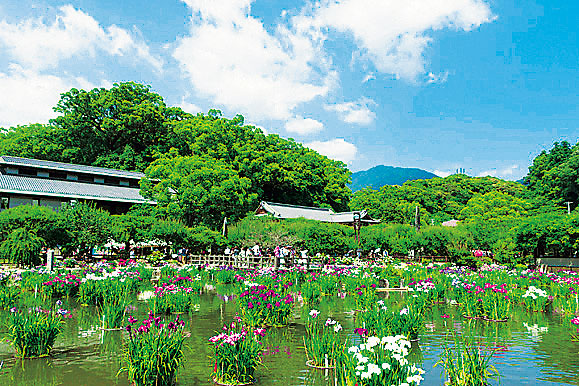
From early to mid-June, 30,000 irises of 55 varieties bloom in the Iris Pond in the East Shrine Garden. At the same time, you can also enjoy the approximately 5,000 hydrangeas around the Iris Pond, Taiko Bridge, and the North Shrine Garden!
■ Sacred Tree Tobiume
You can enjoy a variety of colorful flowers within the temple grounds, including the plum blossoms that Michizane loved so much. We also recommend taking a flower tour according to the season.
The sacred Tobiume tree is located to the right of the main hall and is said to have flown there overnight from Kyoto in adoration of Michizane, who was demoted to Dazaifu. From very early to very late blooming, about 6,000 plum trees of 200 varieties bloom in succession from late January to early March. The sacred Tobiume tree is the earliest to bloom, beginning in mid-January.
By the way, the plum symbol that Michizane loved so much is a symbolic presence within the shrine grounds, and the sacred sake served at Dazaifu Tenmangu Shrine is plum wine.
Cute and beneficial! Check out the charms and fortune slips
The charms and fortune slips that are unique to Dazaifu Tenmangu Shrine are wonderful. After praying, you'll want to take some good luck home with you!
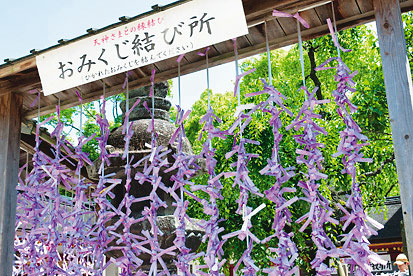
The colors of the fortune slips change with the seasons, and there are 11 colors in total. At the time of our visit, the irises were in full bloom, so the slips were a gorgeous purple color. It looked like flowers were blooming where the slips were tied.
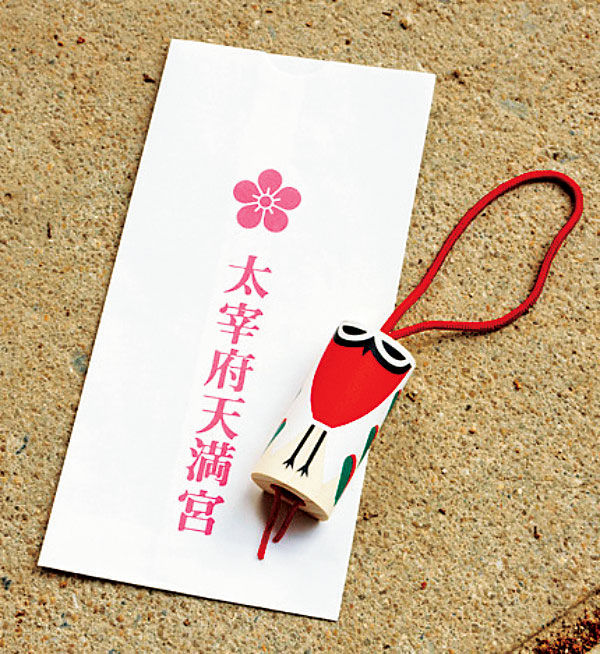
The popular Uso fortune-telling slip, costing 500 yen, is said to bring good luck. Uso is the guardian bird of Tenjin and is said to bring good luck. Its cute expression is also appealing.

For good health and longevity, we recommend the plum charm for 1,500 yen. Inside the charm is a plum from the shrine grounds. Get the symbol of Tenmangu Shrine right in your hands!
■ Dazaifu Tenmangu Shrine
Address: 4-7-1 Saifu, Dazaifu City, Fukuoka
TEL:092-922-8225
Hours: 6:30-19: 00 (6: 00-6 on the day before the spring equinox, 6-19: 30 on the day before the autumn equinox, 12-August, 18: 30 on the day before)
Closed: No Closed
Fee: Precinct Freedom
Dazaifu Tenmangu Shrine is about 30 minutes by train from Nishitetsu Fukuoka (Tenjin) Station, so you can stop by while sightseeing in Fukuoka city. There are plenty of places to eat and walk around the shrine along the approach, and there are plenty of other places to enjoy besides praying, so why not stop by and check it out?
- This article is created based on the contents of "Rurubu Information Edition" or "Rurubu & more." "Rurubu +".
- The data listed are as of March 2025. Prices, business hours, regular holidays, menus, etc. may change or may not be available due to temporary holidays. Please check in advance when using it, as the content may change.
- The holiday of stores and facilities omits the year-end holiday, Obon holiday, Golden Week, and temporary holidays in principle.
- The published fees are in principle the fee including consumption tax that we have confirmed at the time of the interview, and the entrance fee is the adult fee if there is no special mention.
- In principle, the published times are open (hall) to closed (hall). Please note that the last order or entrance (hall) time is 30 minutes to 1 hour before the normal closing (hall) time. The last order is denoted LO.
- For the spring quality and efficacy of the hot springs listed, manuscripts are prepared based on answers from each facility.

